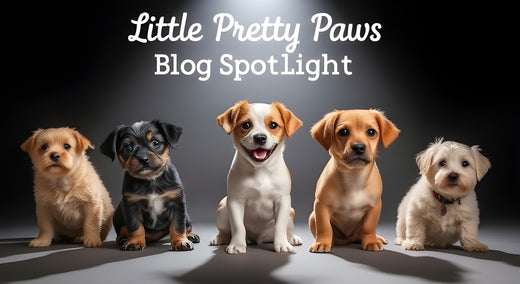
Little Pretty Paws - Blog Spotlight: Dog On Dog Jealousy
A fellow Dog Lover wrote:
Any suggestions on how I can get my small 10 pound dog from being so jealous of his 70 pound big brother? The little dog is 6 1/2 years old and the big dog is 9 1/2 years old. This has been going on for a little while now but it’s getting worse. If the big dog walks over towards me, or my son, the little dog runs at the big dog and starts snapping and biting at his face. These last couple times it’s been much worse. The big dog can be laying on the floor, minding his own business, and the little dog will just run up to him and start nipping and biting at his face. I really want to stop this, but I don’t know how. I’ve tried all kinds of things and nothing seems to work. I don’t want to rehome him, but sometimes I think he needs to be in a home with no other pets.
Little Pretty Paws Response:
It sounds like you're dealing with a frustrating situation, but don't worry—there are definitely steps you can take to help improve things between your dogs. Jealousy and resource guarding behaviors, especially with attention, can be quite common, but with patience and consistent training, you can manage and reduce this issue. Here are some suggestions to help with the behavior:
1. Reinforce Positive Behavior with Both Dogs:
Start rewarding the positive behavior you want to see from both dogs. When the little dog is calm around the big dog, especially when the big dog gets attention, immediately reward him with praise or treats. This will help him associate calm behavior with good things. Also, when the big dog is laying peacefully, you can reward both dogs together for being calm.
2. Use Desensitization and Counter-Conditioning:
Gradually expose your little dog to situations where the big dog is getting attention (like when he’s walking over to you or your son) in a calm way. You can start by creating distance between the two dogs, rewarding the little dog for staying calm and relaxed as the big dog approaches (counter-conditioning). Over time, reduce the distance while continuing to reward calm behavior (desensitization). This process helps teach the little dog that being around the big dog during these moments doesn’t lead to negative outcomes for him.
3. Teach "Leave It" and "Sit/Stay":
Training the little dog to respond to commands like "leave it" or "sit" can help you control the situation when jealousy or aggression is triggered. If the little dog starts to approach the big dog to nip, you can redirect him with the "leave it" command or ask him to sit/stay, which can break the cycle of snapping.
4. Separate Attention Time:
If the jealousy is based on shared attention, try to make sure both dogs get individual, one-on-one time with you or your family members. You might want to separate the dogs during high-attention moments and reward each dog for staying calm and not interrupting. This can help the little dog feel more secure and less likely to act out.
5. Consult a Professional Trainer or Behaviorist:
Since you've already tried different strategies with no success, working with a professional dog trainer or behaviorist could be extremely helpful. A trainer can observe the dogs' behavior and provide tailored advice or training techniques to manage the jealousy and aggression.
6. Veterinary Check-Up:
Since this behavior is worsening, it's also worth having both dogs checked by a vet, especially the little dog, to rule out any underlying medical issues that might be contributing to his irritability or discomfort.
It's clear that you love both dogs and want them to get along peacefully, and with some focused training, it's possible to reduce or eliminate this jealousy behavior. Keep working with patience and consistency—these behaviors often take time to improve.
We hope this helps, and all the best to you with your dogs!
Bye bye for now,
Little Pretty Paws
Of course, this isn't an exhaustive list. We love to hear your tips on what has worked for you down in the comments. And don't forget to tell us the breed of your pet as well!
